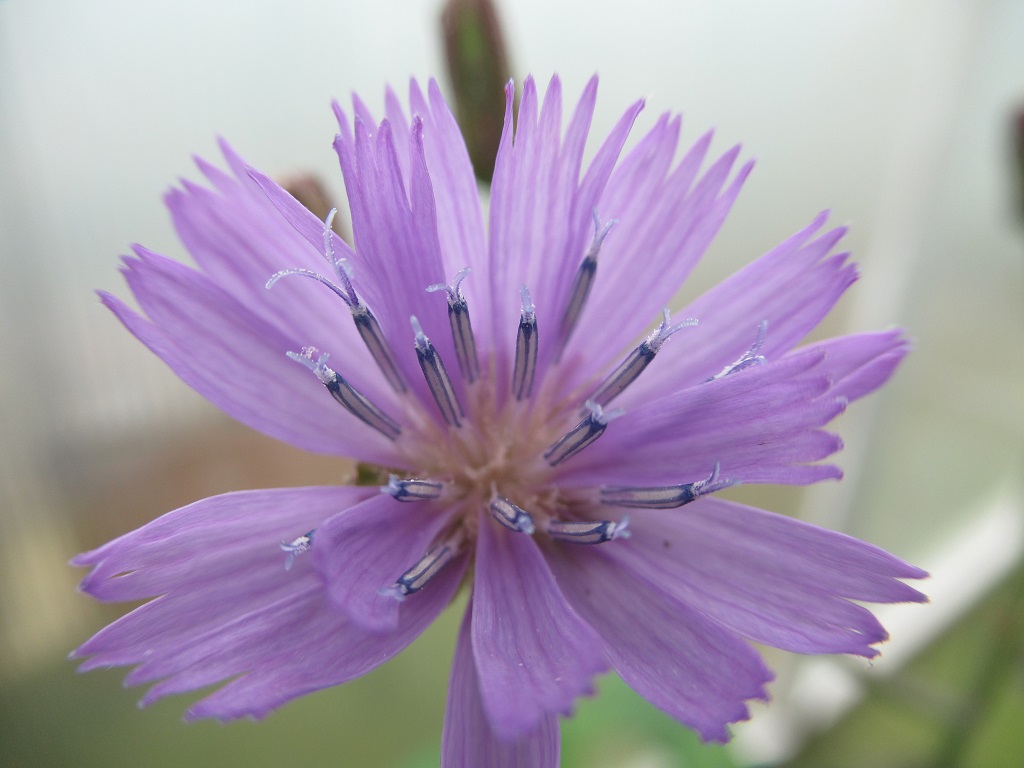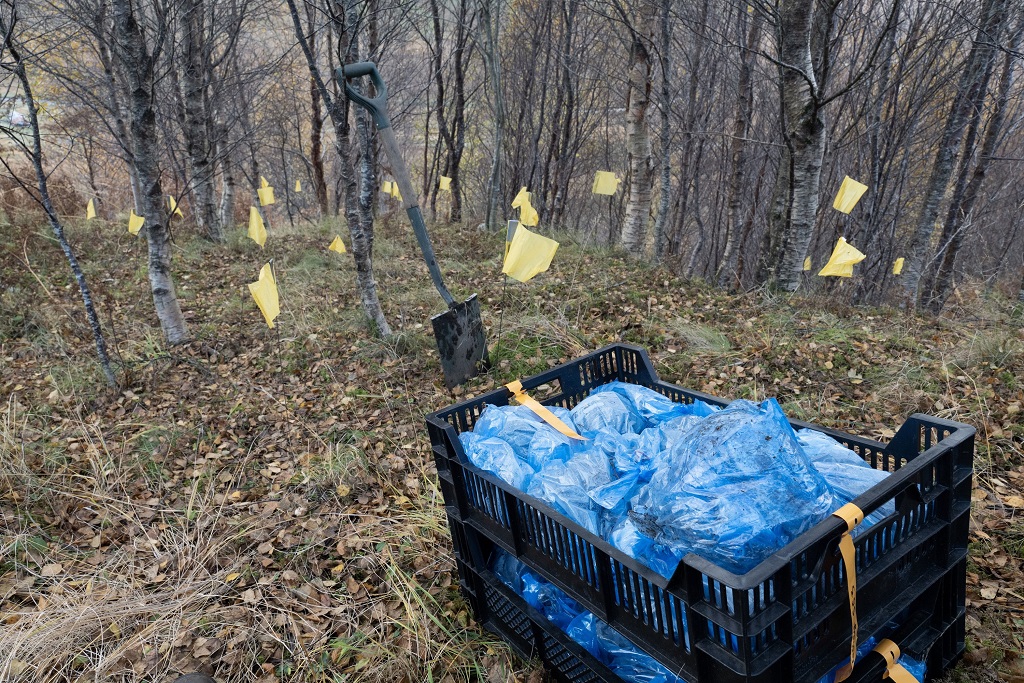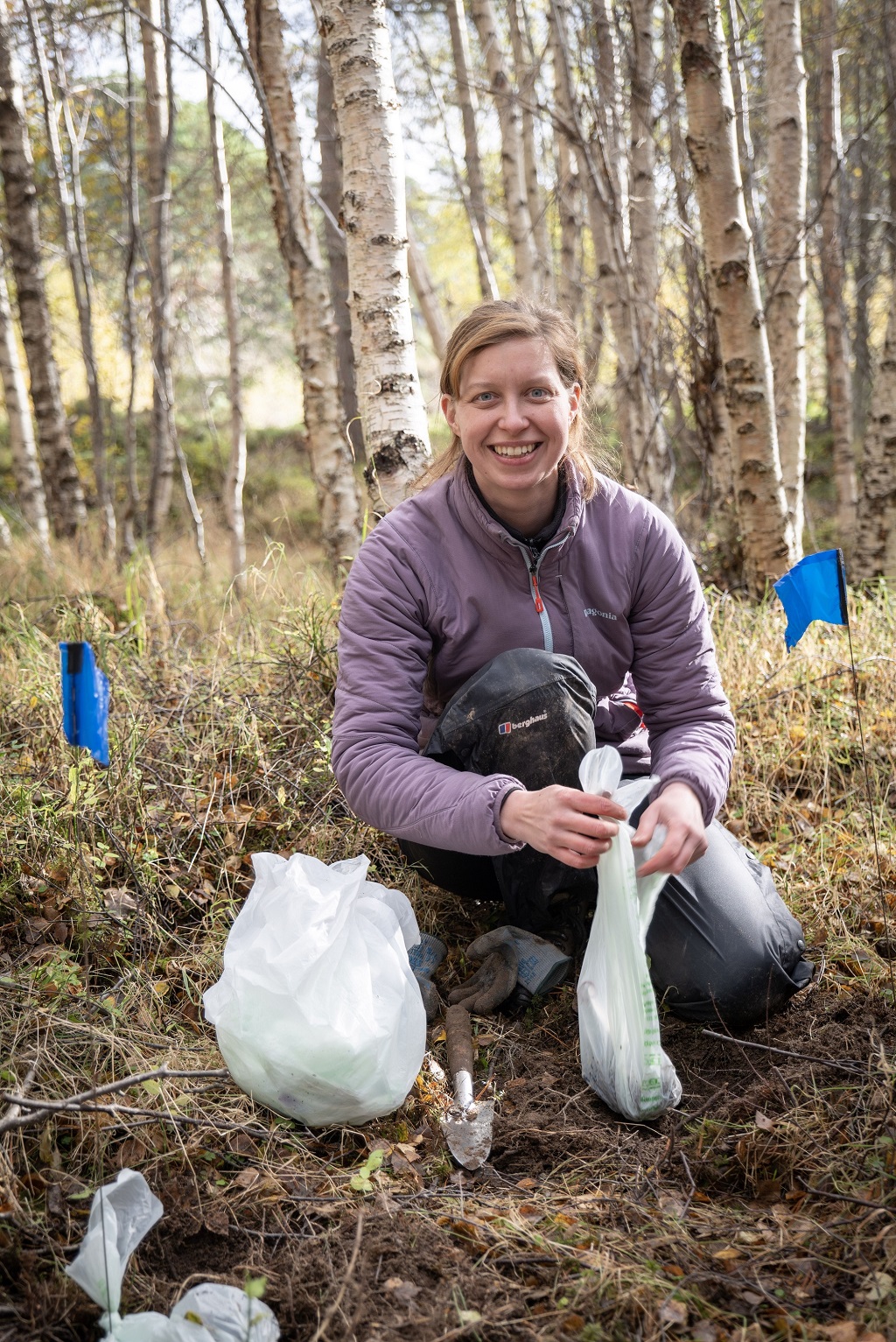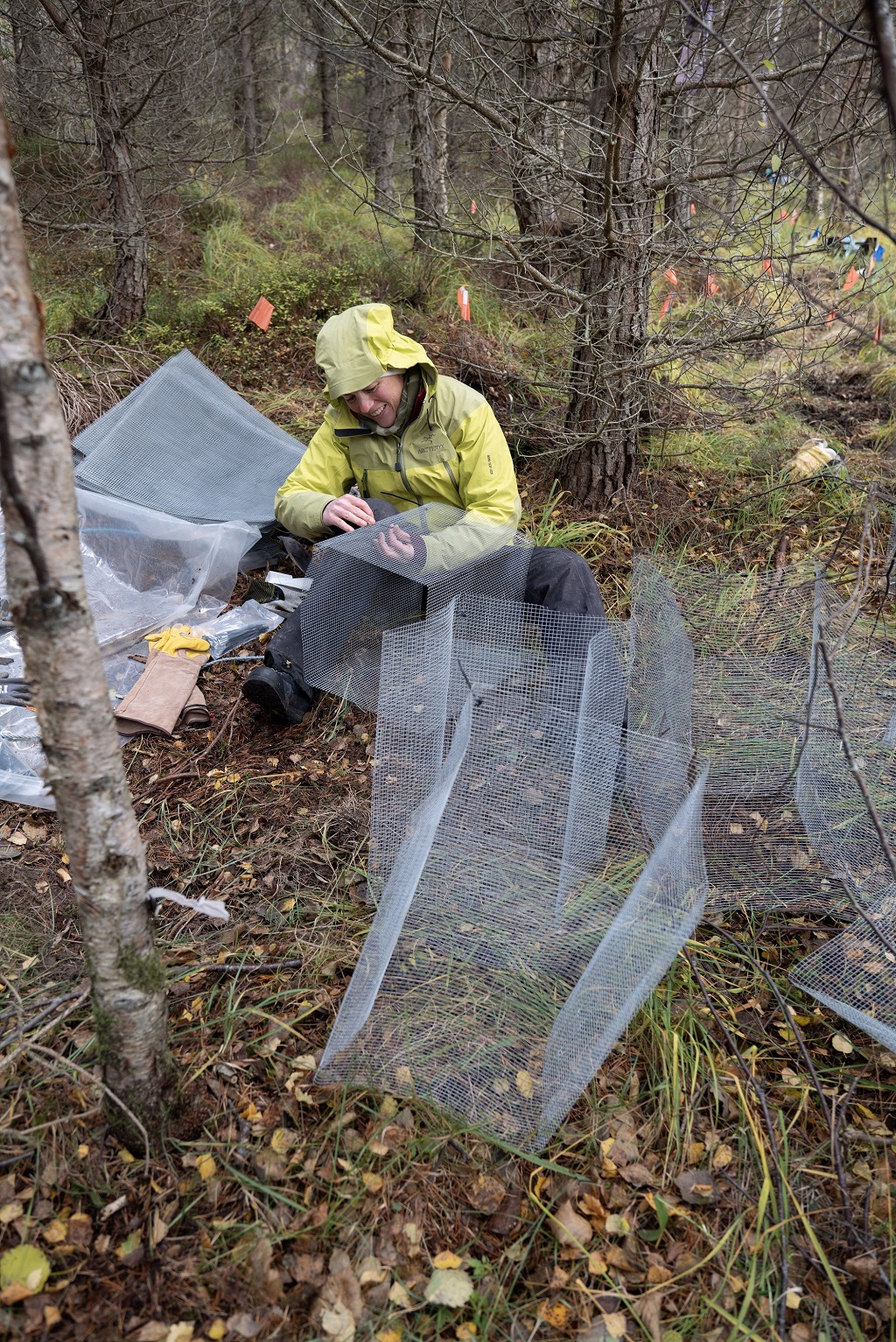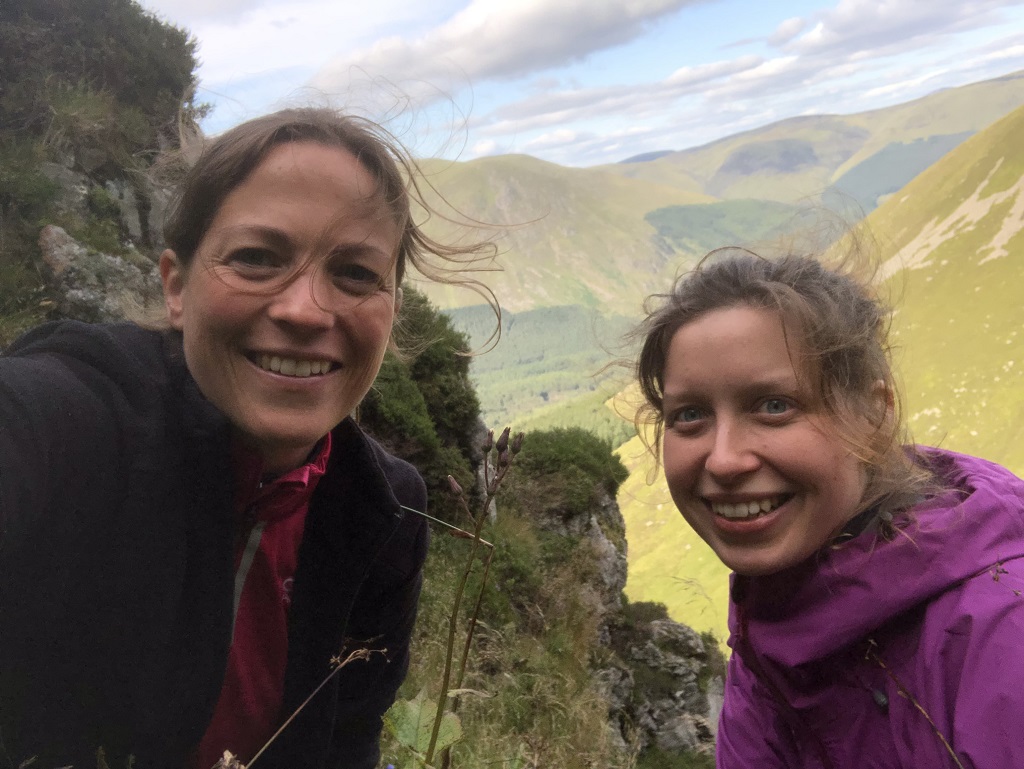Harsh winter weather was not enough to deter intrepid teams from the Royal Botanic Garden Edinburgh as they put conservation theory into action.
They transplanted 900 plants of the endangered alpine blue-sow-thistle (Cicerbita alpina) into secret locations in the Scottish hills.
In a remarkable demonstration of how expert scientists and horticulturists, working together, can help support rare native species such as Cicerbita alpina in their struggle for survival, hundreds of plants were carefully transported from RBGE’s Nursery and translocated into five carefully chosen sites, deep in the Cairngorm National Park.
Scottish conservation horticulturist Martine Borge explained: ‘The fieldwork took place this Autumn in locations within the Mar Lodge Estate, Glen Feshie and Glen Lochay, Pitcastle Estate in the North-East of Scotland.
‘It can be physically demanding work as the plants grow in steep mountainous areas. Occasionally, these are only accessible safely with ropes. However, despite the challenges to the team, ensuring that these new plants are translocated to new, inaccessible mountain spots will give this beautiful and tenacious species its best chance of long-term survival.’
Now classed as Vulnerable and Near Threatened, Cicerbita alpina once grew more widely across the high woodlands and river courses of Scotland, but factors such as grazing and man-made changes to its habitat have pushed the species to the margins.
The mountain plant now survives in only a few high, scattered and largely difficult to access populations in the Cairngorms. This has resulted in a loss of genetic diversity and increased inbreeding and the plant now has a lowered ability to reproduce and expand from its current locations.
Conservation geneticist Dr Aline Finger added: ‘Our Scottish conservation work helps us to better understand the causes of decline in species such as the Cicerbita alpina. This knowledge helps to inform our practical conservation work, allowing us to grow and multiply these rare plants and increase their genetic diversity.
- A Cicerbita alpina in close-up (Photo: Roger Hyam/RBGE)
- A crate full of Cicerbita alpina, ready to be planted out (Photo: Roger Hyam/RBGE)
- Martine Borge in the field, translocating young plants to the natural habitat in a slow and methodical process (Photo: Roger Hyam/RBGE)
- Dr Aline Finger in the field, constructing cages to protect the young plants from hungry woodland creatures (Photo: Roger Hyam/RBGE)
- Dr Aline Finger and Martine Borge translocating Cicerbita alpina in the Cairngorm mountains (Photo: Roger Hyam/RBGE)
‘The translocation of plants is an incredibly important part of our conservation work as it helps to secure the survival of this species in Scotland by creating completely new, genetically healthy populations.’
Preparations for each of the fieldtrips were meticulous. First, the roots of each plant were washed to remove all traces of soil and possible pathogens. They were then carefully packed, ready for transportation. The conservation teams were equally well-prepared with waterproof clothing, midge nets, climbing helmets and gardening gloves – essential equipment for days in the field.
Donnie Broad, Pitcastle Estate manager added: ‘Around ten years ago, we initiated a habitat restoration project at Glenlochy and are really encouraged by the extent and diversity of herbaceous plants that are already establishing themselves – despite intensive grazing in the Glen over the last 200 years.
‘The work of RBGE dovetails perfectly with our own project and we are privileged to work with Martine, Aline and the RBGE team by providing trial sites for the reintroduction of the rare Alpine blue-sow-thistle.’
Cicerbita alpina or the alpine blue-sow-thistle is the tallest alpine perennial herb that grows above 700m altitude. It reaches 50 to 150cm in height and the inflorescence is composed of blue-violet florets held atop red-tinted stems that are soft and flexible, making them better able to withstand heavy winds. In the UK, they can now only be found in isolated spots in Scotland and can bloom from June until early September.
Learn more at www.rbge.org.uk.
TAGS

